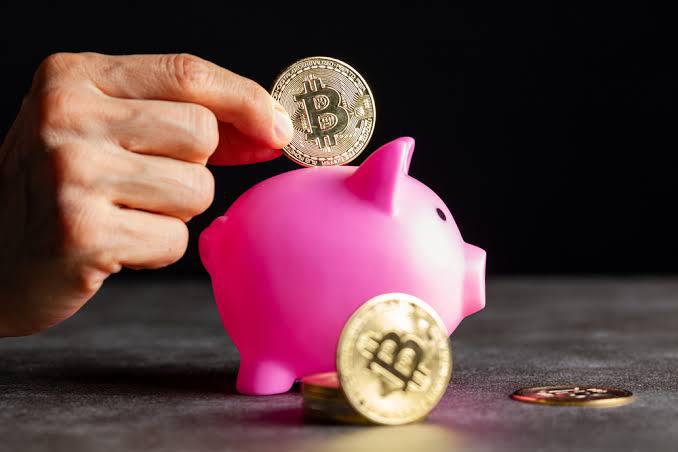In finance, volatility is generally defined as “the rate at which the price of a security increases or decreases for a given set of returns.” Securities are classified as either equity like stocks, or debt like bonds.
Volatility represents how an asset’s value or price move in either direction - flying as high as the sky or down low into the ground. The same idea works for Bitcoin. Volatile assets like Bitcoin or other cryptocurrencies are often described as being riskier assets. Why? It’s because the price or value of highly volatile assets can be difficult to foresee and at times, prices may be moving in pretty significant variations in either direction.
Just how volatile is Bitcoin?
Have you ever wondered how much money you’d have right now if you bought Bitcoin in its early years? Historical data says that the value of 1 BTC was less than 0.01 USD in May 2010. It wasn’t until between February and April 2011 (a year after) that Bitcoin’s price reached 1 USD.
More surprising, however, is the extreme price plunge it experienced six years after. On December 15, 2017, Bitcoin’s price soared incredibly higher at roughly 17,900 USD to nearly 20,000 USD on December 17, 2017. Unfortunately, the price rapidly declined below 14,000 USD starting December 22, 2017. So much drama in less than a week.
This fascinated a lot of investors, traders, and many crypto enthusiasts. And while the big shifts in BTC’s price seem unnatural and impossible, there are tons of factors that might be at play. Briefly, the factors that affect the value of Bitcoin include, but may not be limited to, the following:
- Bitcoin’s limited supply and the level of its market demand
- The number of available competing cryptocurrencies in the market
- The cost of acquiring or generating BTC through the tedious Bitcoin mining process
- Bitcoin’s availability in various cryptocurrency exchanges and marketplaces online
- Geographical regulations, limitations, and legal requirements or concerns
These are just some of the most common factors affecting Bitcoin price movements. As Bitcoin adoption evolves, this list will surely grow along with it.
The advantages and disadvantages of Bitcoin’s volatility
Earlier, we mentioned that volatility affects the asset’s price and that these price movements can go in either direction. That’s why it’s important to know both the good and bad of what volatility can offer to Bitcoin, especially if you’re planning to try your hand at Bitcoin trading or investment.
Advantages
Traditional fiat currencies that are issued by governments are controlled and monitored by central banks. This monitoring includes both the money’s movement in the economy, along with its supply and demand. This means that central banks can print and reproduce paper money and issue them to their respective jurisdiction whenever needed in order to stabilize the flow of money in the economy.
One of the main reasons why Bitcoin is considered to be one of the most volatile assets today is because of its limited supply. Bitcoin has a maximum supply of 21 million BTC—the total number of Bitcoins that can be mined.
As at 20 March, 2021, Bitcoin’s circulating supply is at 18.660 million BTC. This means that there are only less than 3 million BTC left to be mined. Whenever the levels of demand in Bitcoin exceed or surpass the number of holders who are willing to sell, there could be a natural rise in BTC’s price and value.
Crypto traders and investors also take advantage of Bitcoin’s volatility by engaging in various investments and trading approaches for locking in high investment returns. Some employ the buy-and-hold (HODL) strategy, where they acquire funds and hold them for a certain amount of time—usually when BTC’s value is at peak—before they release them for selling.
Apart from long-term methods, others make use of short-term approaches to find opportunities to gain profits. Usually, this is done by properly predicting Bitcoin’s short-term trends. This method can be tricky and technical, so be sure to familiarize yourself with whichever approach you’re planning to explore.
Another benefit of Bitcoin’s volatility is that it creates headlines, which brings more curious crypto explorers and wannabe Bitcoin enthusiasts into the crypto space. As more and more individuals join crypto markets, lots of profit-gaining opportunities can also be unlocked through trading and investment offers.
Disadvantages
If you’re a Bitcoin trader or investor who’s a fan of short-term trading, the volatility of Bitcoin may not be your best friend. Since short-term trading involves speedy intervals—quick minute-to-minute or even second-to-second shifts—making accurate predictions of price movements can be challenging for you. There are also other strategies, like working on a longer span, such as days or weeks. But all in all, the process can be pretty exhausting.
Another thing is that if this volatility causes Bitcoin’s price to decline dramatically, chances are, crypto traders, holders, and investors will feel FOMO or the Fear of Missing Out. Crypto enthusiasts might have a hard time deciding whether or not to let go of their hard-earned coins or buy and hold more.
If the price upsurges, Bitcoin holders and traders can get intensely excited and thrilled about it—most notably those who are holding vast amounts of BTC at that very moment. Meanwhile, those who don’t have a fair number of coins in their hands might find the situation to be a regretful one.
On the flip side, if the price drops significantly, holders with large amounts of BTC may also have regrets of not selling their coins right away.
Protect your money from volatility
With all that we’ve mentioned before, it’s safe to say that Bitcoin’s volatility can get a bit tricky at times. It’s a fine line that can make a big difference no matter which side you’re on. In simpler terms, more volatility can mean more risk and unfortunately, not a lot of people are willing to take that risk. So, what do you do if you want to try to protect your money from rapid price plunges?
Well, there are a few ways but one option could be to convert it into a stablecoin. In short, stablecoins are cryptocurrencies that are tied to the value of an external asset. Take Tether (USDT), the highest-ranked stablecoin on the market, as an example. USDT is designed to be tied to the value of the US Dollar, which means the exchange rate is intended to stay at 1 USDT = 1 USD.
If you convert your BTC into a stablecoin, you can go to sleep knowing that the value of your money should be the same when you wake up.
Is Bitcoin volatility good or bad?
Apart from being classified as being an exceptional and unique kind of digital currency, these major price swings are also one of the biggest reasons why Bitcoin is unceasingly gaining the spotlight in the crypto and financial markets today. Just like any other volatile asset, Bitcoin’s highly volatile nature undeniably has had its fair share of massive income returns for some.
So, is Bitcoin’s volatility good or bad? Ultimately, it’s up to you to decide. Just be sure to keep these learnings in mind and you’ll surely find out how volatility works as you go along in your crypto journey.
Learn about Bitoin price volatility, and how you can use it to your advantage.







